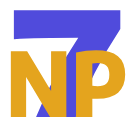Quantum computing is now gaining momentum as a key area of innovation in the cloud computing world. Although widespread commercial use remains on the horizon, tech giants like Microsoft Azure and Amazon Web Services (AWS) are actively working to bring quantum solutions closer to developers and scientists. These efforts often integrate with hybrid cloud solutions to support flexible, quantum-classical workflows.
So how exactly are AWS and Microsoft Azure shaping the future of quantum computing? Who’s ahead, and how can businesses get involved today?
Let’s explore the technologies, philosophies, and roadmaps behind these two cloud quantum giants.
What is quantum computing?
Quantum computing harnesses the principles of quantum mechanics to solve problems that are intractable for classical computers. While classical computers use bits (0 or 1), quantum computers use qubits, which can exist in superpositions and can be entangled with other qubits.
This allows quantum computers to:
- Explore vast solution spaces in parallel.
- Solve certain optimization, simulation, and cryptographic problems exponentially faster.
- Accelerate research in breakthroughs in materials science, machine learning, financial modeling, and pharmaceutical development.
Despite their potential, quantum systems are highly sensitive to environmental noise, difficult to scale, and require advanced error correction. These challenges make quantum hardware complex and expensive to manage directly. That’s where cloud-based quantum services come in built on the evolution of cloud infrastructure over the past two decades.
Cloud-based quantum services address these limitations by providing remote access to quantum processors and simulators. This allows researchers and developers to build and test quantum algorithms without the need for specialized infrastructure.
Azure Quantum: Microsoft’s scalable quantum ecosystem
Azure Quantum is Microsoft’s end-to-end quantum computing platform, designed to support experimentation, development, and early-stage application of quantum solutions. It brings together a range of tools and services through a unified cloud interface. The platform offers:
- Access to multiple quantum hardware providers, including ion trap and superconducting systems.
- A comprehensive development environment through the Quantum Development Kit (QDK) and Q# programming language.
- Integration with classical high-performance computing (HPC) resources and optimization solvers for hybrid workflows.
- An open and modular ecosystem that supports both academic research and enterprise use cases.
- Cloud-based resource management, job orchestration, and diagnostics for scalable quantum workloads.
- Partnerships with hardware innovators, national labs, and universities to drive platform and algorithm maturity.
Azure Quantum also supports simulation environments, so developers can prototype and test quantum algorithms before deploying them to real quantum hardware.
Key features of Azure Quantum
Azure Quantum brings together hardware diversity, development tools, and scalable infrastructure to support real-world quantum experimentation and hybrid workflows.
1. Quantum hardware providers
Azure Quantum offers access to a diverse range of quantum processor technologies via integrated partners:
- IonQ (ion trap)
- Quantinuum (trapped ions)
- Rigetti (superconducting qubits)
- Pasqal (neutral atoms)
2. Quantum Development Kit (QDK) and Q# language
Microsoft provides a complete quantum software stack, including:
- The Q# programming language is designed specifically for quantum algorithm development.
- An open-source Quantum Development Kit (QDK) with libraries, simulators, and integration with Python and other frameworks.
3. Hybrid quantum–classical workflows
Azure enables hybrid execution models that combine quantum circuits with classical processing. This supports algorithms like VQE and QAOA and allows integration with Azure’s classical HPC resources.
4. Simulation and optimization tools
Developers can prototype and test quantum algorithms using:
- High-fidelity quantum simulators from hardware providers.
- Quantum-inspired optimization (QIO) solvers use classical methods based on quantum principles to solve large-scale optimization problems.
- Integration with Azure HPC infrastructure for performance at scale.
Strengths of Azure Quantum
The platform offers a hybrid computing model, focuses on practical industry use cases, integrates deeply with the Azure ecosystem, and supports a broad set of quantum hardware providers.
- True hybrid approach: Combines quantum and classical computing within a unified workflow.
- Industry-focused use cases: Addresses real-world challenges in chemistry, logistics, finance, and optimization.
- Deep integration with Microsoft Azure services and AI: Connects with Azure’s computing, storage, and AI ecosystems.
- Open architecture: Supports multiple quantum hardware providers under a single platform.
Challenges of Azure Quantum
Azure Quantum continues to develop, but certain gaps slow its broader adoption.
- Q# adoption is limited: Usage remains low outside academia and specialized research.
- Hardware still NISQ-level: Quantum systems have limited qubit count and no error correction. NISQ stands for Noisy Intermediate-Scale Quantum, meaning that today’s quantum computers have a limited number of qubits (usually tens to hundreds) and aren’t perfect.
- Lower developer engagement: Less adoption compared to Python-based platforms like Qiskit.
- Smaller ecosystem: Fewer third-party tools and community libraries relative to Python stacks.
Amazon Braket: AWS’s Quantum-as-a-Service platform
Amazon Braket is a managed quantum computing service from AWS that allows developers and researchers to experiment with quantum algorithms across multiple hardware platforms and simulators. It provides a unified set of tools for building, testing, and refining quantum applications.
Key features of Amazon Braket
Amazon Braket provides a unified environment for accessing quantum hardware, simulators, and hybrid development tools.
1. Hardware providers
Braket gives users access to diverse quantum hardware platforms from leading providers:
- IonQ (ion trap)
- Rigetti (superconducting)
- Oxford Quantum Circuits (OQC)
- QuEra (neutral atoms)
2. Braket SDK
An open-source, Python-based framework for developing quantum algorithms. It provides consistent tools regardless of which hardware or simulator is used.
3. Fully managed simulation
On-demand quantum simulators for testing and prototyping algorithms:
- SV1 – State vector simulator
- DM1 – Density matrix simulator (supports noise and decoherence)
- TN1 – Tensor network simulator (optimized for low-entanglement, large-circuit structures)
4. Hybrid jobs framework
AWS supports orchestration of hybrid quantum-classical workflows via integration with AWS Lambda and EC2. Hybrid Jobs handle job scheduling, execution, monitoring, and metrics logging.
5. Integration with Amazon SageMaker
Amazon Braket connects with SageMaker to support quantum machine learning workflows and model training pipelines.
Strengths of Amazon Braket
Amazon Braket combines ease of development, hardware flexibility, research‑oriented features, and strong AWS ecosystem integration to support quantum experimentation and hybrid workloads.
- Developer-friendly (Python SDK): The open-source, Python-based SDK simplifies quantum algorithm development and adjustment across devices.
- Modular and hardware‑agnostic: It separates software logic from hardware specifics, enabling seamless switching between providers like IonQ, Rigetti, OQC, and QuEra.
- Strong focus on research + algorithm experimentation: Supports variational algorithms, uses frameworks like PennyLane, and includes pre-defined tutorials and notebook examples.
- Integration with AWS ecosystem (S3, Lambda, CloudWatch): Braket tracks metrics with CloudWatch, integrates storage through S3, and runs hybrid jobs with the help of Lambda and EC2.
Challenges of Amazon Braket
While Amazon Braket is accessible and flexible, it faces some structural and capability-related limitations.
- Third-party hardware reliance: This approach depends on third-party hardware rather than an internally developed stack.
- Limited enterprise presence: Few established business applications are currently in production.
- Basic optimization support: Offers a smaller range of solvers for near-term or hybrid use cases.
Azure vs AWS: Quantum cloud comparison
| Capability | Azure Quantum | Amazon Braket |
| Programming language | Q# + Python via SDK | Python (Braket SDK) |
| Hardware access | IonQ, Rigetti, Quantinuum, Pasqal | IonQ, Rigetti, QuEra, OQC |
| Hybrid workflows | Yes, tightly integrated with Azure HPC | Yes, via Hybrid Jobs + EC2 + Lambda |
| Optimization solvers | Quantum-Inspired Optimization (QIO) is available | Not natively; limited to research use cases |
| Simulation support | Quantum simulator in QDK | SV1, DM1, TN1 (scalable, GPU-backed) |
| Ecosystem Integration | Microsoft Azure Stack, Power Platform | AWS stack, SageMaker, Lambda, EC2 |
| Open Access | Yes | Yes |
| Developer Support | Growing (academic stronghold) | Strong (Python-first, open source) |
Real-world use cases
Azure Quantum and AWS Braket support use cases with real-world complexity and scale.
1. Drug discovery and chemistry
- Azure Quantum simulates molecular behavior and binding energies with quantum-inspired methods.
- AWS Braket supports partners like QC Ware as they run quantum chemistry workloads.
2. Supply chain optimization
- Azure’s QIO engine helps companies like Toyota optimize routes and logistics operations.
- AWS experiments with hybrid quantum models to address scheduling and bin packing challenges.
3. Finance and risk modeling
- Banks use quantum simulators to explore portfolio optimization and option pricing strategies.
- Azure provides Q# libraries designed for quantum Monte Carlo simulations.
The long game: Strategic positioning
Both providers invest in quantum for the long run, but the strategies of AWS and Microsoft Azure reflect different priorities and ecosystems.
Microsoft Azure: Full-stack vision
- Developing topological qubits (theoretical but highly stable).
- Building its own quantum hardware.
- Investing in a quantum operating system and compiler toolchain.
- Deep collaboration with academia, national labs, and Fortune 500s.
AWS: Open, accessible, and research-focused
- Focused on democratizing access to a wide variety of hardware.
- Investing in quantum networking (Center for Quantum Networking).
- Partnering with quantum startups and enabling hardware vendor neutrality.
Final verdict: A tale of two approaches
| Strategic focus | Azure Quantum | AWS Braket |
| Stack ownership | Deep (language, compiler, hardware R&D) | Light (focuses on orchestration and access) |
| Target users | Enterprises, industrial research | Developers, researchers, startups |
| vision | End-to-end hybrid quantum cloud platform | Quantum-as-a-Service with flexibility |
| Developer entry | Steeper learning curve (Q#) | Accessible (Python SDK) |
Quantum is coming. Be ready.
We are still in the NISQ era, which means most business problems are not yet solvable by quantum computers alone. However, cloud platforms are already making it possible to:
- Access and experiment with real quantum hardware
- Develop hybrid algorithms that combine classical and quantum methods
- Build internal knowledge and skills ahead of broader adoption
If you are a researcher, data scientist, enterprise architect, or a company looking to explore cloud quantum computing, AWS and Azure offer stable environments where you can explore and prepare for quantum technologies, especially as advancements in AI continue to shape what’s next.
Quantum computing may not be ready for full-scale production today. However, if your organization is not preparing for it now, it may fall behind when the time comes.
Xavor helps organizations to experiment with quantum and build solutions on platforms like AWS and Microsoft Azure. Contact us at [email protected] to begin your quantum readiness journey.


